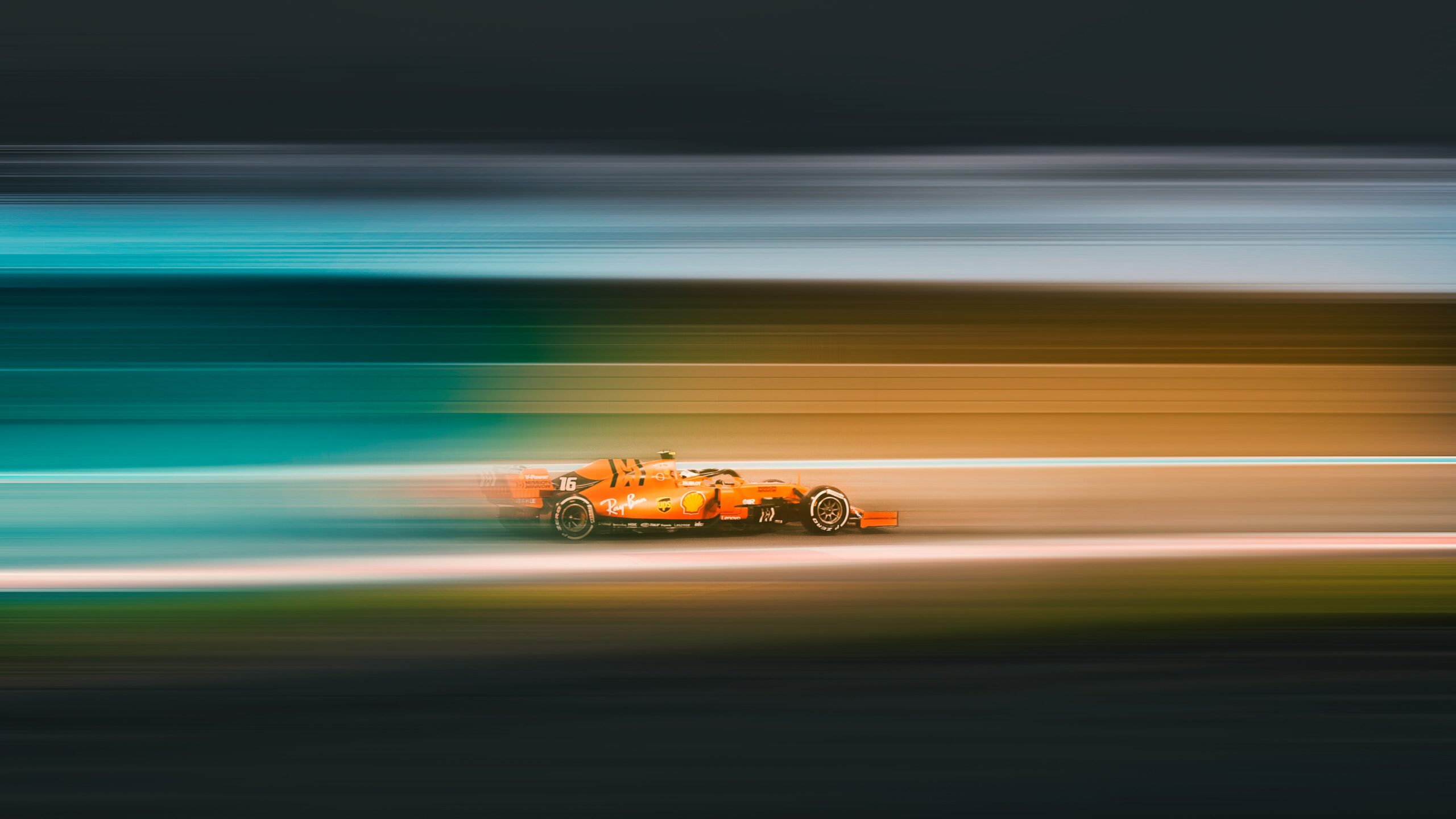Whoever told you that electric single-seaters are boring has told you nonsense.
The heat, the racing cars and the electric motor. These are the elements of the triangle that marked the day spent watching Formula E in Rome. Arriving in Italy for the 13th and 14th rounds of the season, before the last two ePrix scheduled in London (29-30 July), the world’s first completely Net Zero Carbon motorsport, allowed me to discover the world of electric speed. Because it is one thing to drive a green car on the road, quite another to see single-seaters whizzing around the city circuit built, as it is every year, in the EUR district, an urban and architectural complex built in the 1930s for the 1942 Roman World Expo, then no longer scheduled due to the outbreak of World War II.
Face-to-face with Maserati MSG Racing
The only battle of the day for all those who attended the exhibition was with the high temperatures, around 38°-40°C, which somewhat complicated a busy and exciting programme. Invited by Stoli, a well-known vodka brand that as a company has in its portfolio a large number and variety of spirits and wines and is this season one of the main sponsors of the Maserati MSG Racing team, I had the opportunity to look closely and (really) touch electric bolides capable of pushing up to 320 km/h.
There was a lot of enthusiasm, such as during the visit to the paddock and the Maserati box, where I met Maximilian Günther and Edoardo Mortara, the two drivers of the Monaco-based team, and saw their racing cars up close, noting some aesthetic similarities with a Formula 1 car. Shortly afterwards, together with other journalists and the various team guests, I found myself on the race track, with the cars on the grid and the mechanics finishing the last few minutes before the start of the Roman E-Prix.
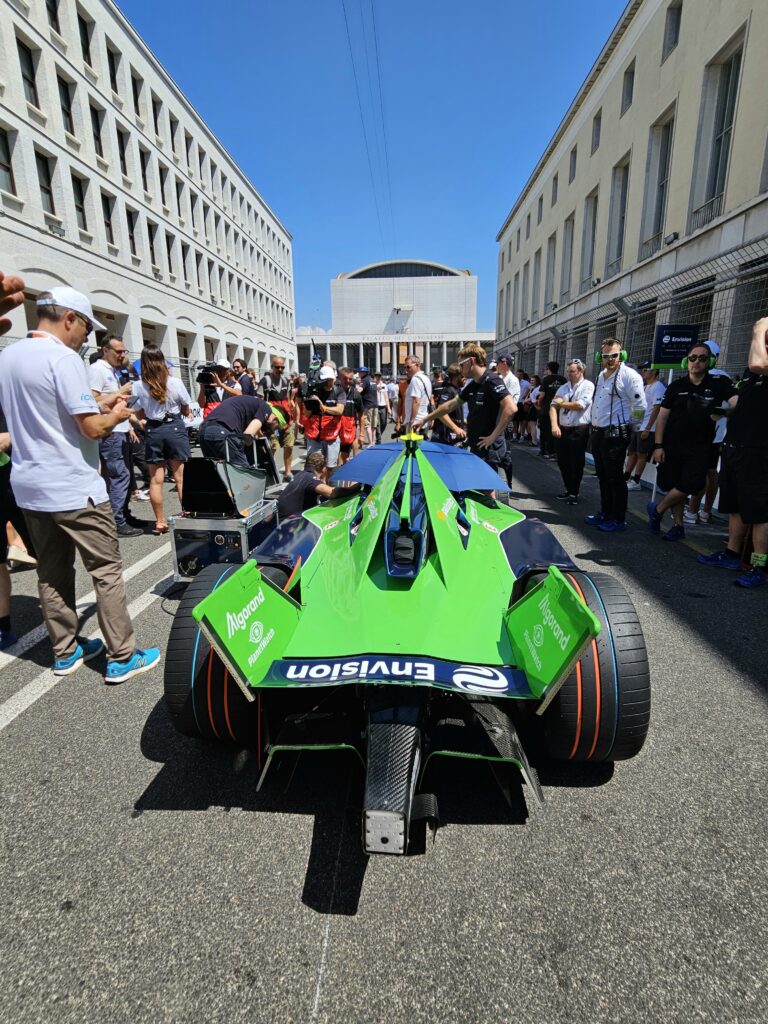
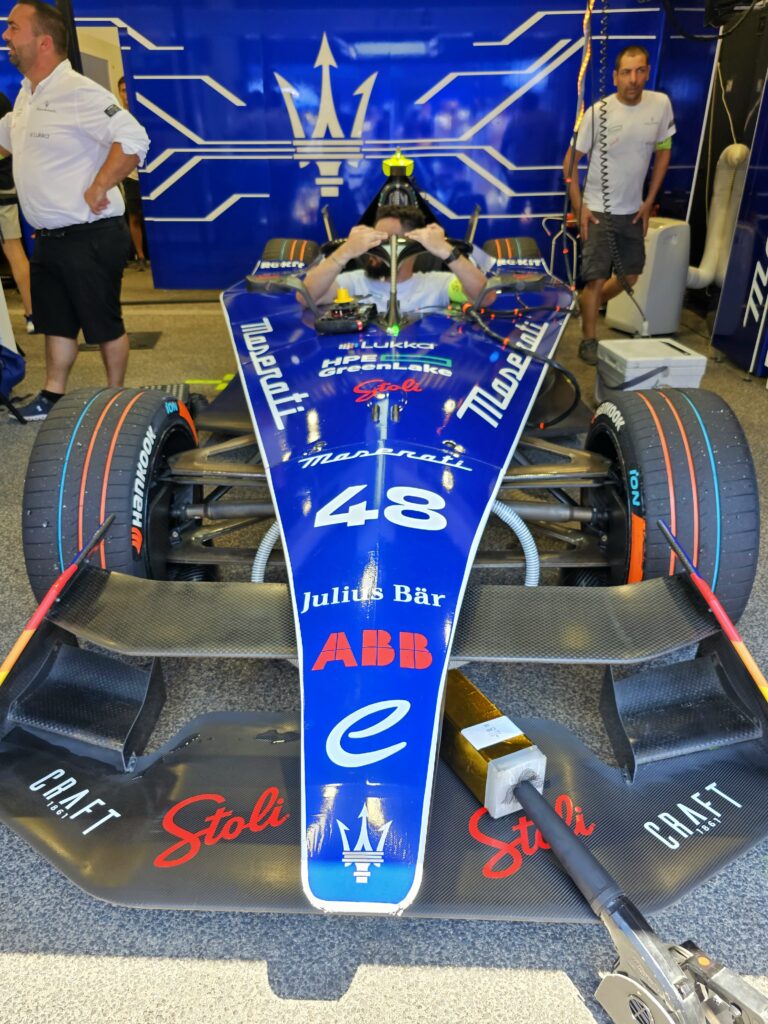
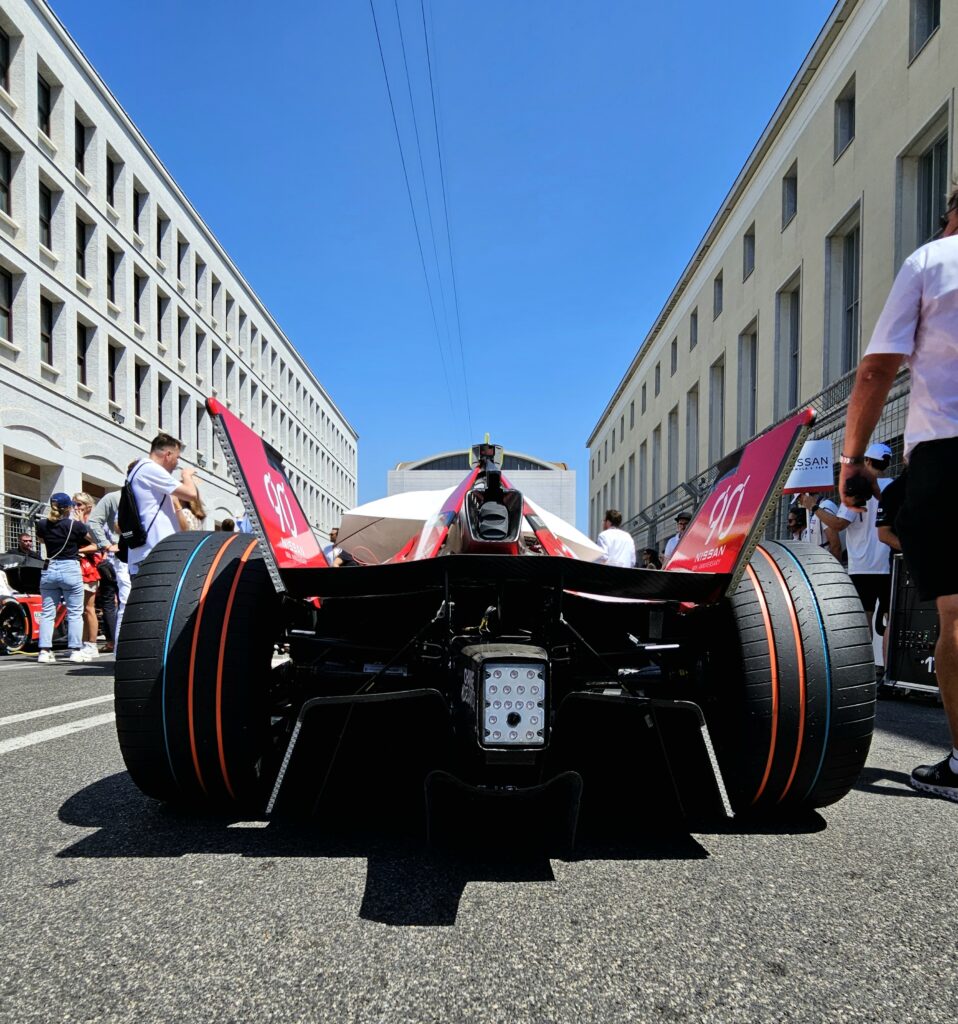
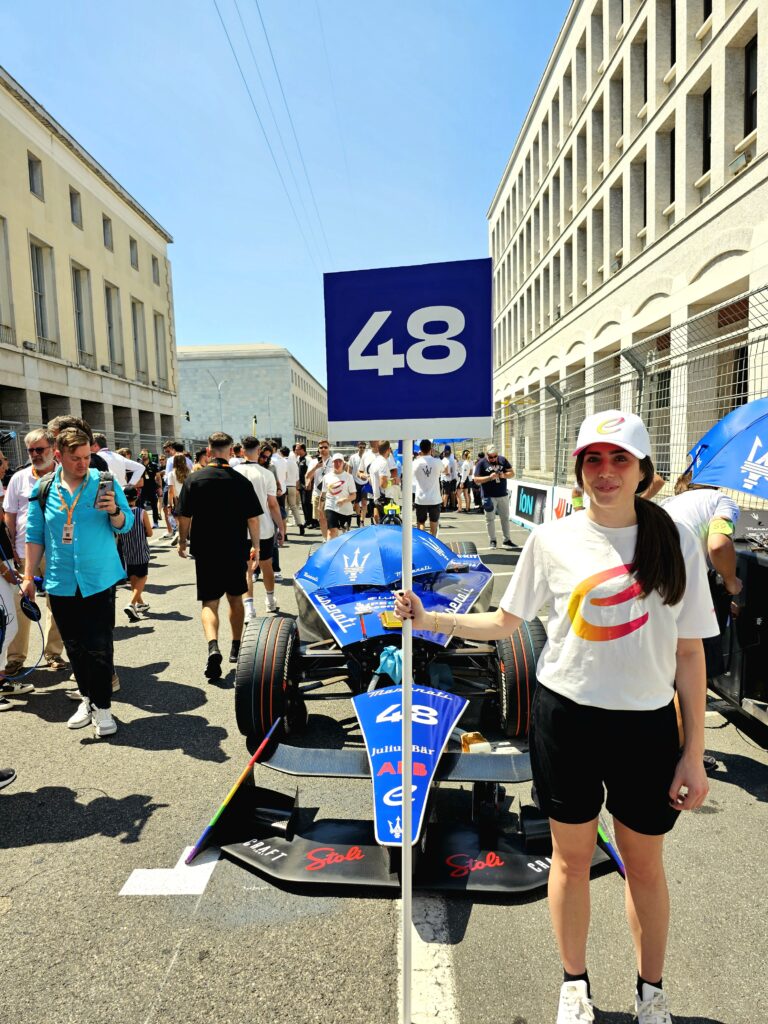
Efficiency and sustainability, the secrets of GEN3
Everyone knows that the ABB FIA Formula E was born to spread the electric car and prove that the speed-electric combination can find a place among fans, to establish itself as a new standard in motorsports. With one advantage over the more famous Formula 1: the tracks are all within cities because the electric single-seaters exploit constant braking to produce more than 40% of the energy consumed during the race. This is one of the peculiarities of GEN3, the single-seater unique to all teams that debuted in early 2023, the ninth season of Formula E.
It is the most sustainable racing car ever built in design and function, not only because all emissions associated with its development and production have been offset but because of its energy efficiency of almost 95%. It is the first racing car with both a front and rear propulsion system (250kW + 350kW) and is equipped with a battery capable of receiving 4kWh of energy in 30 seconds, the cells of which will be reused and recycled at the end of its life.
The bodywork is made of recycled carbon fibre from GEN 2 cars used last season. Similarly, this year’s scrap material will be reused for new applications, while Hankook tyres are 26% recyclable thanks to recycled fibres and natural rubber. The wheels from the start of this season are uncovered, with the cars closer to their traditional appearance, making them similar to Formula 2 cars.
The queen of Formula E
The curious aspect of a sport that is still purely male is that GEN3 was designed by a woman, Alessandra Ciliberti. She does not have a car because she rides a bicycle (sustainability is a reason for living for her) but is very good at making them. A mechanical engineering graduate from Modena, Italy, she has already experienced Formula 1 thanks to Toro Rosso and, after four years at BMW, was appointed FIA Technical Manager for Formula E.
From her insights will come part of the most critical developments in the electric world championship, with GEN4 planned for 2027 preceded by GEN3.5, which will have new tyres and a few kilos less than the current 854 kg (including driver).
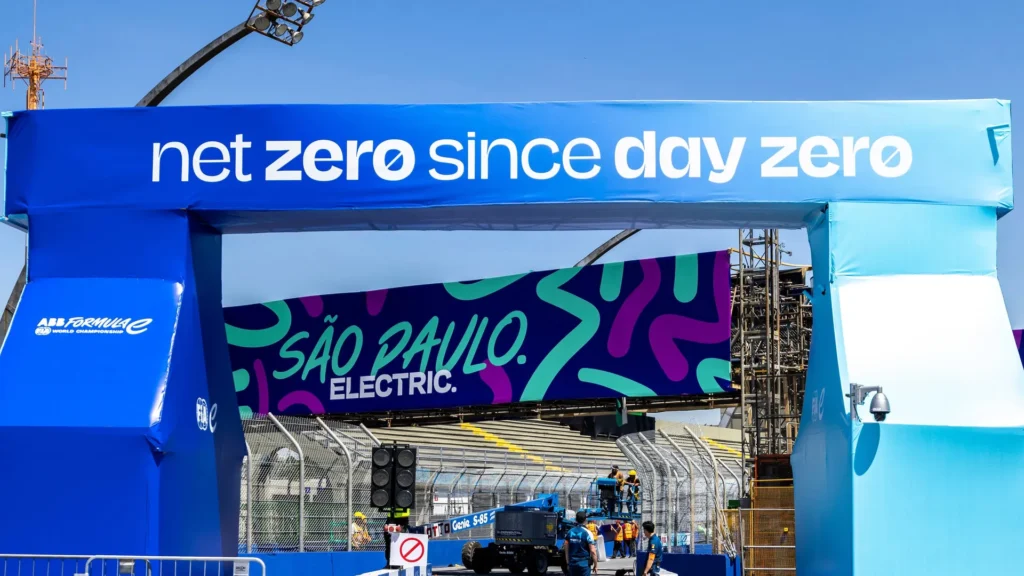

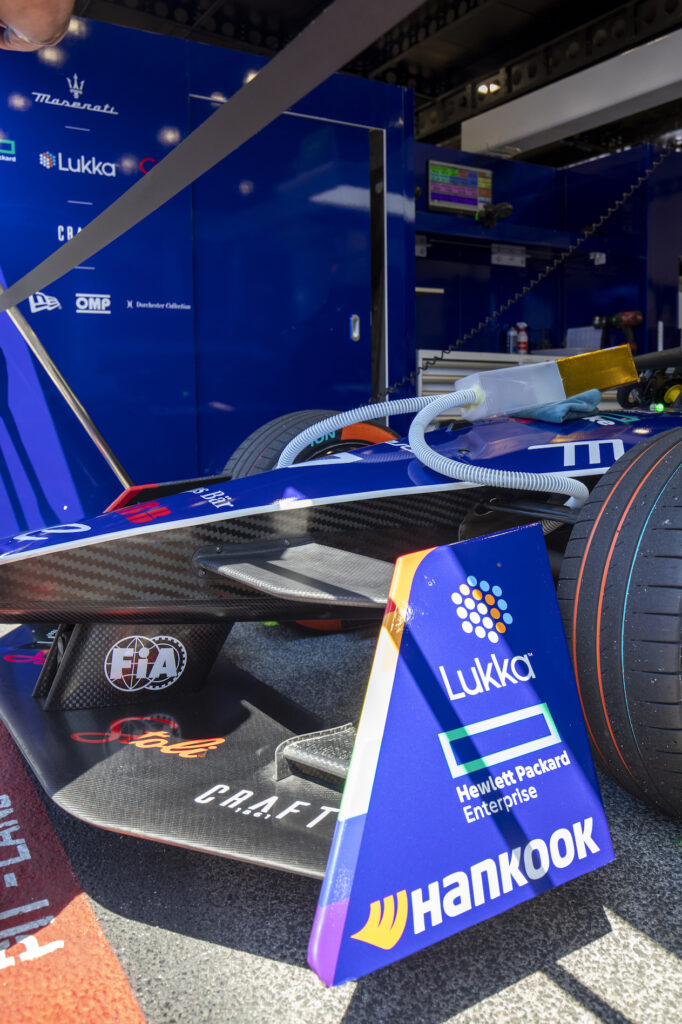
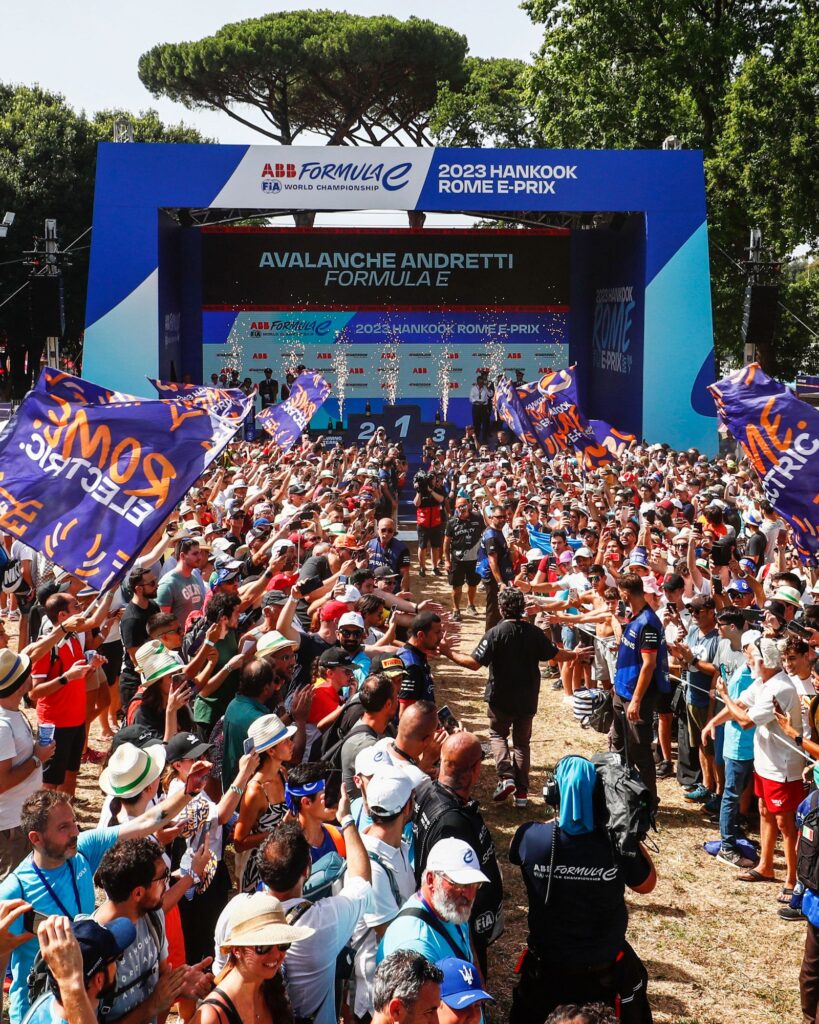
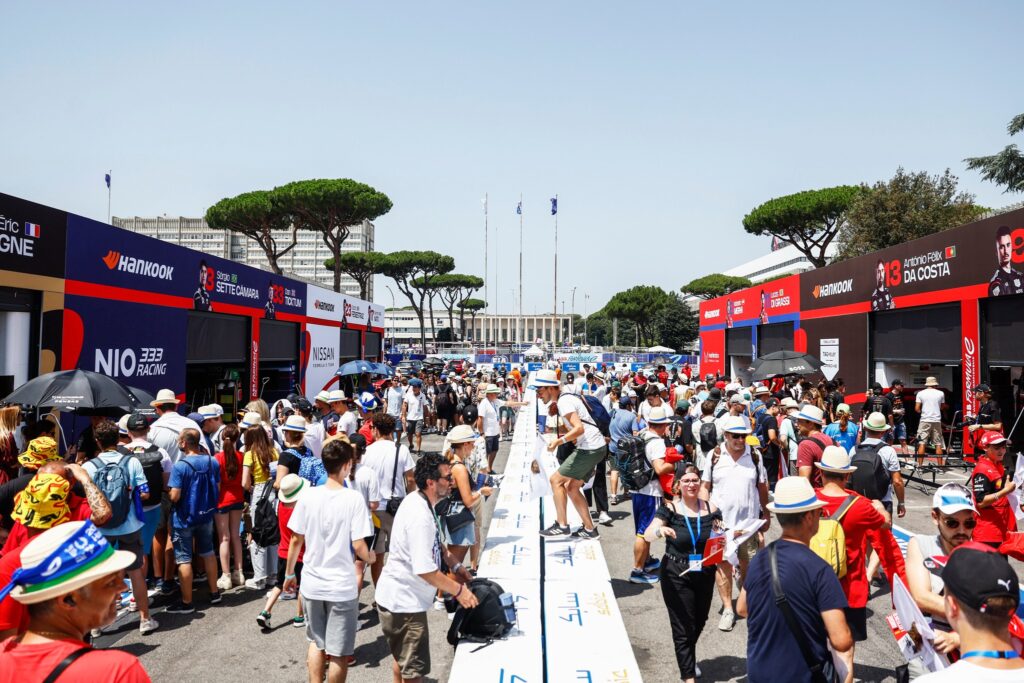
Formula E: An e-Prix we will long remember
The fruits of evolution can be seen on the track, including on the Roman circuit, the longest in the championship (3.385 km). With so many curves and tight spaces, typical characteristics for Formula E, the race offered overtaking but, above all, the unexpected twist with the accident that forced the race to be interrupted for about forty minutes.
The collision was triggered by the impact with the edge of the track of Sam Bird’s Jaguar, caused by a dip in the road, which resulted in him being stopped in the middle of the track. At that point, several single-seaters arrived, some of which dodged the obstacle, while others were unable to and ended up violently hitting the Jaguar in the middle of the track.
A lot of fear also among the drivers for the most frightening accident in the history of Formula E, but fortunately, everything was resolved without severe consequences for anyone. So much so that, once the track had been cleared of debris, it was back to racing, with Mitch Evans in the other Jaguar TCS winning, ahead of Envision Racing’s Nick Cassidy and Maximilian Günther’s Maserati.



